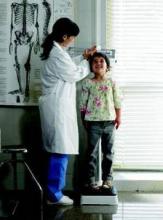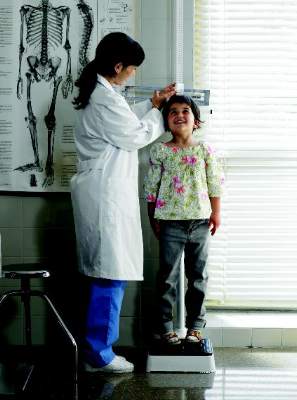User login
The rate of uninsured children in the United States continues to decline, according to new research from the Robert Wood Johnson Foundation.
The number of children under age 19 without health insurance decreased by 1 million from 5.9 million in 2013 to 4.9 million in 2014 during the first full year of the Affordable Care Act, according to an analysis of U.S. Census data, prepared by the State Health Access Data Assistance Center at the University of Minnesota School of Public Health for RWJF. States saw either declines or stable rates of uninsured children, but none saw any significant increases.
The rate of uninsured children varied on a state-by-state basis, according to the report. Researchers found that in two states (Vermont and Massachusetts), fewer than 2% of children were uninsured, while in three states (Alaska, Texas and Arizona), more than 10% of children did not have insurance coverage.
Overall, six states (Texas, California, Florida, Georgia, Arizona, and New York) account for nearly half of the nation’s nearly 5 million uninsured children, though four of them (California, Texas, Florida, and Georgia) also saw the largest reduction in uninsured children.
Gains were attributed to increases in both public and private insurance coverage, with the portion of children enrolled in private coverage increasing by 0.4% to 59.2%, while those enrolled in coverage through Medicaid and CHIP increased by 0.8% to 34.5%.
The rate of uninsured children in the United States continues to decline, according to new research from the Robert Wood Johnson Foundation.
The number of children under age 19 without health insurance decreased by 1 million from 5.9 million in 2013 to 4.9 million in 2014 during the first full year of the Affordable Care Act, according to an analysis of U.S. Census data, prepared by the State Health Access Data Assistance Center at the University of Minnesota School of Public Health for RWJF. States saw either declines or stable rates of uninsured children, but none saw any significant increases.
The rate of uninsured children varied on a state-by-state basis, according to the report. Researchers found that in two states (Vermont and Massachusetts), fewer than 2% of children were uninsured, while in three states (Alaska, Texas and Arizona), more than 10% of children did not have insurance coverage.
Overall, six states (Texas, California, Florida, Georgia, Arizona, and New York) account for nearly half of the nation’s nearly 5 million uninsured children, though four of them (California, Texas, Florida, and Georgia) also saw the largest reduction in uninsured children.
Gains were attributed to increases in both public and private insurance coverage, with the portion of children enrolled in private coverage increasing by 0.4% to 59.2%, while those enrolled in coverage through Medicaid and CHIP increased by 0.8% to 34.5%.
The rate of uninsured children in the United States continues to decline, according to new research from the Robert Wood Johnson Foundation.
The number of children under age 19 without health insurance decreased by 1 million from 5.9 million in 2013 to 4.9 million in 2014 during the first full year of the Affordable Care Act, according to an analysis of U.S. Census data, prepared by the State Health Access Data Assistance Center at the University of Minnesota School of Public Health for RWJF. States saw either declines or stable rates of uninsured children, but none saw any significant increases.
The rate of uninsured children varied on a state-by-state basis, according to the report. Researchers found that in two states (Vermont and Massachusetts), fewer than 2% of children were uninsured, while in three states (Alaska, Texas and Arizona), more than 10% of children did not have insurance coverage.
Overall, six states (Texas, California, Florida, Georgia, Arizona, and New York) account for nearly half of the nation’s nearly 5 million uninsured children, though four of them (California, Texas, Florida, and Georgia) also saw the largest reduction in uninsured children.
Gains were attributed to increases in both public and private insurance coverage, with the portion of children enrolled in private coverage increasing by 0.4% to 59.2%, while those enrolled in coverage through Medicaid and CHIP increased by 0.8% to 34.5%.

